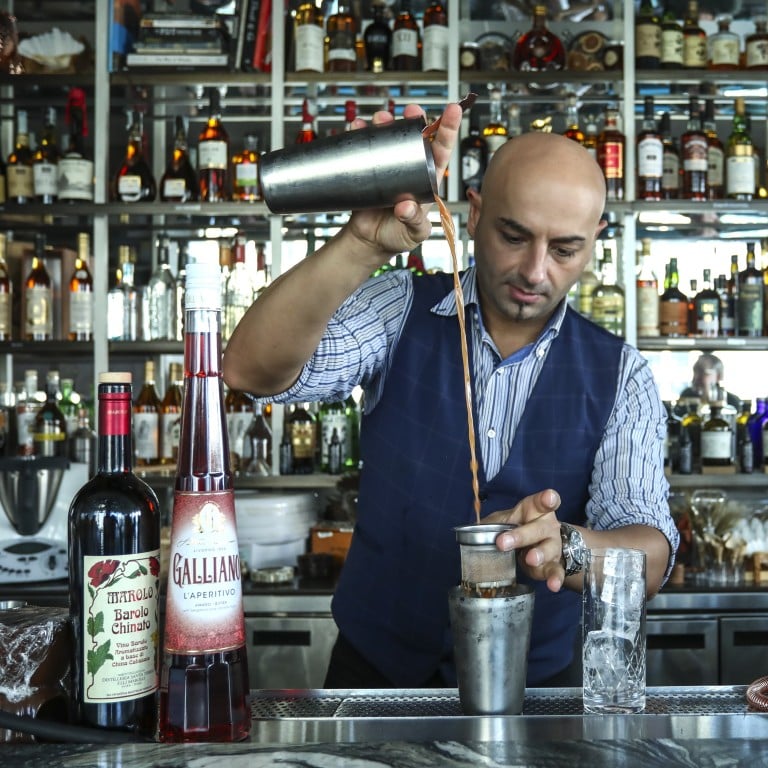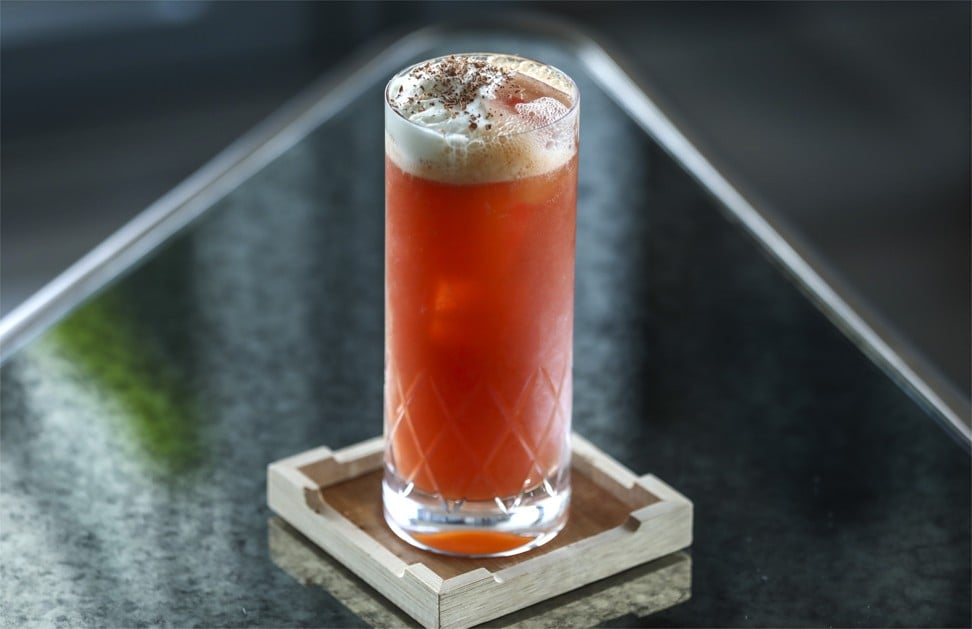
Hong Kong bartender’s Milano cocktail a tribute to the fashion capital with a Japanese twist
- Jonny Amir, of Zest by Konishi, says the cocktail he devised is inspired by both the Milano-Torino and the Garibaldi
- A little yuzushu - yuzu-macerated in sake - adds a taste of the Land of the Rising Sun
Giuseppe Garibaldi (1807-1882) earned his place in history as a prominent revolutionary figure in Italy and South America during the mid-19th century. In particular, he is considered to be one of the founding fathers of the Risorgimento, a movement that led to the unification of Italy.
He is also notable for the extraordinary diversity of places and things that admirers have chosen to name after him. These include a British biscuit, a Californian fish, a Mexican pop group, a station on the Paris Metro, a mountain range in British Columbia, a Brazilian football team and several Italian ships.
That list also includes a liquid tribute to the great man. The Garibaldi cocktail is one of the classic Italian aperitivos – drinks taken with light bites or alone to sharpen the appetite – and consists of Campari and orange juice, mixed in roughly equal parts and poured over ice.
The drink’s reddish-orange hue is thought to recall the colour of the Camicie Rosso uniform worn by Garibaldi’s volunteer army, popularly known as the “red shirts”, hence the name.
A brief history of bitters, from Pharaonic tombs to Jäger bombs
The composition of the Garibaldi also has an Italian unity theme. Campari comes from Milan in the north, and – although orange juice from other sources is often used – it is traditionally made with the juice of Sicilian oranges, grown in the south.
Campari was invented by Gaspare Campari, in 1860, in Novara, a city in the Piedmont region, to the west of Milan. A distinctively red-coloured bitters, Campari is flavoured with a proprietary mixture of herbs and fruit, including chinotto (small bitter oranges that grow in Italy and other Mediterranean locations) and medicinal cascarilla.
Gaspare Campari later moved to Milan and opened a cafe, where he devised a cocktail that became known as the Milano-Torino, comprising equal measures of Campari and Punt e Mes, a vermouth from Turin, known for its balance of bitterness and a touch of sweetness.
The name of that cocktail is often abbreviated to the Mi-To but, if you are going to do that, the hyphen and capital letters are important. There is another “Mito cocktail”, which is a combination of vitamins and supplements used to treat mitochondrial disease.
Jonny Amir, who has worked at London’s acclaimed Nightjar speakeasy and is now beverage manager at Zest by Konishi, in Central, abbreviates it anyway.
“The godfather of Italian mixology is the Mi-To,” he says. “It captures the herbal and bitter flavours of Italy. The Americano derives from the Mi-To, and the negroni, and even the Garibaldi. They all require a balance of bitterness and sweetness. Orange juice is sweet, Campari is bitter.”
The fat-washed cocktails taking off in Hong Kong
Amir had both the Mi-To and the Garibaldi in mind when devising his Milano cocktail, one of a series he is developing for the menu at Zest, each designed as a tribute to one of the world’s great towns or cities.
In creating the Milano, Amir took inspiration from the cosmopolitan aspects of the city, as Italy’s fashion capital and one of its great cultural and economic centres, and while maintaining the Italian core of the drink, he looked beyond the country’s borders for several ingredients.
“I tried to combine the many flavours Italian people take for aperitivo – bitterness, herbs, things that wake up the palate,” he says. “I also tried to think about both the ingredients of the Garibaldi and respect the same refined taste, but instead of using Campari I blended Barolo Chinato, which supplies some more complexity of flavour with Galliano L’Aperitivo, and also some grapefruit and berries.”
Barolo Chinato is a traditional Italian aromatised wine from Piedmont, usually taken as a digestivo rather than an aperitivo. It is made by infusing Barolo red wine with the bark of the South American cinchona tree.

“Barolo Chinato is a kind of vermouth, but it has more flavour from herbs and botanicals, and it’s quite smoky. The refined wine notes are also more evident than in vermouth,” says Amir. “In a sweet vermouth you will have a sweet herb-acid flavour. In this one you are going to have a lot of flavour, and a lot of bitterness, but the wine flavour will dominate. That’s why it’s called not vermouth but Barolo Chinato.”
Galliano L’Aperitivo is a citrus-flavoured amaro (a bitter herbal liqueur), made by the producers of the sweet Liquore Galliano L’Autentico, and includes chinotto, bergamot and, for a touch of sweetness, a little of the original sweet Galliano liqueur in its flavourings.
Amir pours the Barolo Chinato and Galliano L’Aperitivo into a juicer, adding a little yuzushu (yuzu-macerated in sake) for a Japanese touch appropriate to the restaurant, and uses the column of the unit to infuse more fresh fruit flavour, using grapefruit and berries, which are allowed to steep for about two weeks. That mixture, topped up with orange juice, would be enough for an original twist on the basic Garibaldi, but Amir wanted to add more flavours and textures to the formula.
The blend and the juice are shaken with ice and double-strained into a highball glass over ice before foam is added from a siphon.
“We make the foam with Roots Rakomelo – a liqueur made with wild honey from Greece – cream, milk and egg white,” he says. “I like to create a mix of unusual flavours. The challenge is to translate complex information into something that is refreshing and easy-going with nice, original presentation.
The Clover Club – an accessible, sophisticated cocktail
“We top up 75ml of the blend [of Barolo Chinato, Galliano L’Aperitivo, yuzushu and fresh fruit] with 80ml of orange juice, which adds freshness. On top of that we add the foam so there are two textures – that fattiness and the freshness.”
Adding a final cosmopolitan bittersweet touch, shaved chocolate made with 70 per cent cacao from Papua New Guinea is dusted over the foam. The Milano is an aperitivo to linger over, although Garibaldi himself probably would not have liked it. He is believed to have been mostly teetotal, apart from a liking for sweet marsala wine.
Most Italian restaurants should be able to serve a decent Garibaldi to something like the original recipe. For an original Mi-To (they call it more formally a Milano-Torino) and other Italian aperitivo drinks, La Piola, in Wan Chai, is a good place to go. Pirata, also in Wan Chai, is known for its selection of Italian vermouths.

